As the construction industry continues to grow, so does its impact on the environment. Traditional power sources, such as diesel generators, are not only expensive but also cause a significant amount of CO2 emissions. To combat this issue, more and more construction companies are turning towards sustainable power solutions, such as renewable energy microgrids, to power their sites.
Renewable energy microgrids are becoming increasingly popular in the construction industry as a way to reduce carbon footprint and increase efficiency. These microgrids typically consist of a combination of solar, wind, hydro, or geothermal power sources, along with energy storage and distribution systems. By relying on renewable energy sources, construction sites can significantly reduce their reliance on diesel generators, resulting in a cleaner and more sustainable power source.
Key Takeaways
- Renewable energy microgrids are a sustainable power solution for construction sites
- They typically consist of a combination of solar, wind, hydro, or geothermal power sources, along with energy storage and distribution systems
- They can significantly reduce a construction site’s carbon footprint and reliance on diesel generators
Understanding Renewable Energy Microgrids
Renewable energy microgrids are green energy systems used in construction projects to provide energy solutions. These microgrids are self-contained, allowing construction sites to operate independently from the grid, reducing their carbon footprint and reliance on traditional energy sources.
A renewable energy microgrid uses a combination of power sources, such as wind, solar, and battery storage, to provide electricity to the site. The microgrid also incorporates monitoring systems to track energy usage and manage power supply and demand in real-time.
One of the key benefits of renewable energy microgrids is their ability to reduce CO2 emissions. By using sustainable power solutions, construction sites can significantly decrease their environmental impact and contribute to a more sustainable future.
Benefits of Renewable Energy Microgrids
Renewable energy microgrids offer numerous benefits for construction sites. Firstly, they provide a reliable and efficient power supply, reducing the risk of downtime and delays. Secondly, they lower operating costs by reducing electricity bills and the need for expensive fuel sources.
Moreover, renewable energy microgrids offer improved energy security, as they are often less vulnerable to power outages and supply-chain disruptions. Microgrids also provide a sustainable energy source that has the potential to produce significant savings on electricity expenses.
Finally, the integration of renewable energy microgrids can increase a construction site’s environmental performance by reducing their carbon footprint. By using sustainable energy solutions, construction sites can contribute to a more sustainable future and reduce the industry’s overall reliance on fossil fuels.
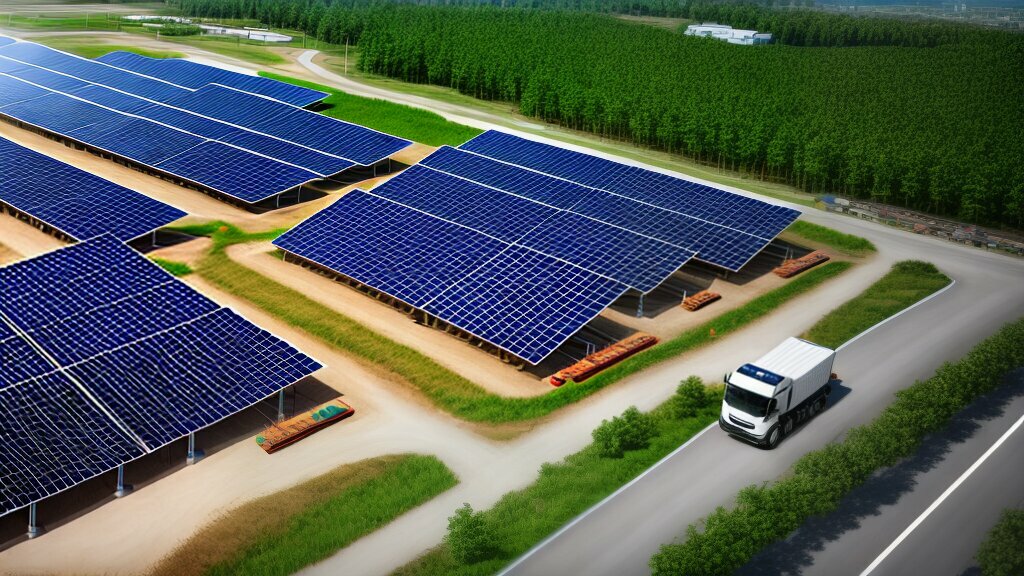
“Renewable energy microgrids offer a sustainable and cost-effective solution to power construction sites while reducing their carbon footprint.”
Off-Grid Power Systems for Construction Sites
Off-grid power systems are an ideal energy solution for construction sites where there is no access to a grid connection. These systems operate independently, providing reliable and sustainable power to the site. They are also highly efficient in managing energy consumption, resulting in significant cost savings.
The main advantage of off-grid power systems is that they can be tailor-made to suit the specific energy needs of the construction site. This allows for a more efficient use of energy, reducing waste and improving overall sustainability. Additionally, off-grid power systems can be designed to include renewable energy sources, such as solar or wind power, which can further reduce reliance on fossil fuels and decrease CO2 emissions.

“Off-grid power systems are an ideal energy solution for construction sites where there is no access to a grid connection.”
There are various types of off-grid power systems that can be installed in construction sites, including diesel generators, battery storage systems, and hybrid systems that combine multiple energy sources. However, it is essential to carefully consider the design and capacity of the system to ensure its effectiveness and reliability. This requires a comprehensive understanding of the construction site’s energy needs and usage patterns.
Overall, off-grid power systems are an excellent option for construction sites that require a sustainable power solution. By incorporating renewable energy sources and efficiently managing energy consumption, construction sites can improve their environmental performance, reduce costs, and promote sustainable development.
Benefits of Renewable Energy Integration in Construction Sites
Integrating renewable energy solutions into construction sites provides a range of benefits, making them an attractive option for contractors and project managers. Here are some of the key advantages of using renewable energy for construction site power management:
| Benefit |
Description |
| Cost savings |
Renewable energy microgrids can help reduce energy costs for construction sites by generating power from free and abundant natural resources, such as sunlight and wind. In addition, they can provide a reliable source of power, reducing the need for costly backup generators and grid power. |
| Reduced reliance on fossil fuels |
By using renewable energy sources such as solar and wind power, construction sites can reduce their dependence on fossil fuels and reduce their carbon footprint. This can improve their environmental performance and help to mitigate climate change. |
| Improved environmental performance |
Renewable energy microgrids can significantly reduce CO2 emissions, air pollution, and other harmful environmental impacts associated with traditional fossil fuel power sources. This can help construction sites to meet environmental regulations and sustainability targets. |
Overall, integrating renewable energy into construction sites can help reduce costs, improve environmental performance, and promote sustainable energy solutions for the construction industry.
Image Alt Tag: Renewable Energy Integration Benefits for Construction Sites
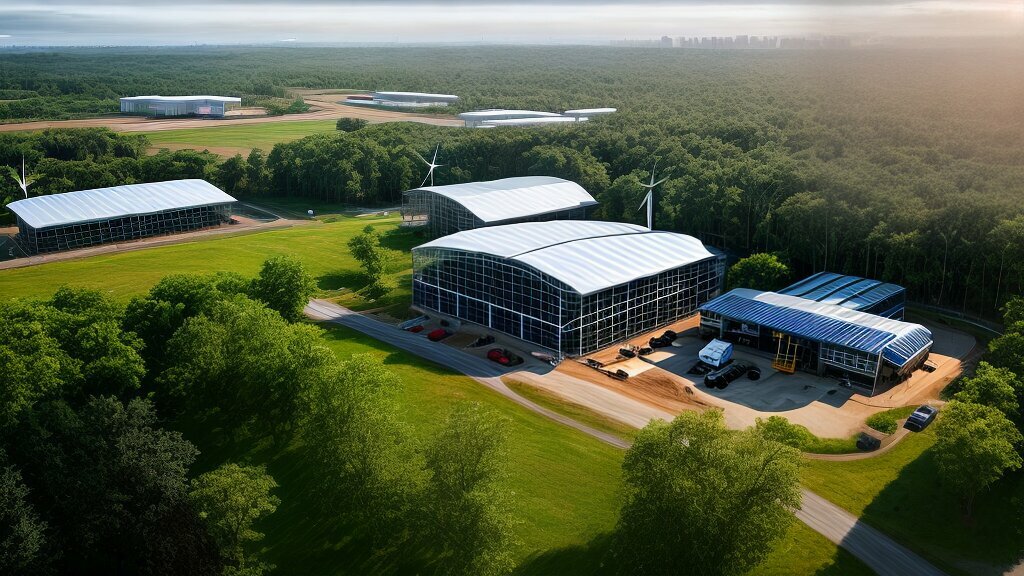
Sustainable Power Solutions for Temporary Construction Sites
Temporary construction sites often require portable and flexible power solutions that can be easily moved and adapted to changing energy demands. Renewable energy microgrids can provide a sustainable and efficient alternative to traditional fossil fuel-powered generators.
One potential solution for temporary sites is the use of mobile solar panels, which can provide a reliable and renewable source of energy without the need for a permanent installation. These panels can be easily moved around the site to maximize energy capture and can also be fitted with battery storage for use during periods of low sunlight.
Another option is the use of portable wind turbines, which can harness energy from even low-speed winds. These turbines are easy to transport and set up, making them an ideal solution for temporary construction sites that require flexible power solutions.

It is important to note that while renewable energy microgrids can be an effective solution for temporary construction sites, careful planning and management are necessary to ensure optimal performance and energy efficiency. This includes identifying the site’s energy demands, selecting the appropriate renewable energy source, and implementing effective energy storage and management systems.
Key Considerations for Implementing Renewable Energy Microgrids
Implementing renewable energy microgrids in construction sites requires careful planning and consideration. Here are some key factors to keep in mind:
| Consideration |
Description |
| System Design |
The design of the microgrid system should take into account the specific energy needs of the construction site, as well as the available renewable energy sources. It is important to ensure the system is scalable and can accommodate future energy demands. |
| Capacity Planning |
Proper capacity planning is essential in ensuring the microgrid system can meet the energy demands of the construction site. This includes determining the appropriate balance between renewable energy sources and energy storage, as well as the necessary backup power systems. |
| Maintenance Requirements |
Renewable energy microgrid systems require regular maintenance to ensure they operate efficiently and effectively. It is important to establish a maintenance schedule and conduct regular inspections to detect and address any issues. |
Additionally, it is important to involve all stakeholders in the planning and implementation process, from project managers to energy providers and construction workers. Ensuring everyone is on board will help to ensure the success of the renewable energy microgrid system.

By keeping these key considerations in mind, construction sites can successfully implement renewable energy microgrids and enjoy the benefits of sustainable power solutions for years to come.
Case Studies: Successful Implementation of Renewable Energy Microgrids
Real-life examples demonstrate the positive impact of renewable energy microgrids on construction projects. Two successful implementations include:
Swinerton Builders Headquarters
The Swinerton Builders’ San Francisco headquarters implemented a 100 kW solar power system with battery storage, reducing their reliance on the grid and providing backup power during outages. In addition to environmental benefits, the system has saved the company over $30,000 in electricity costs annually.
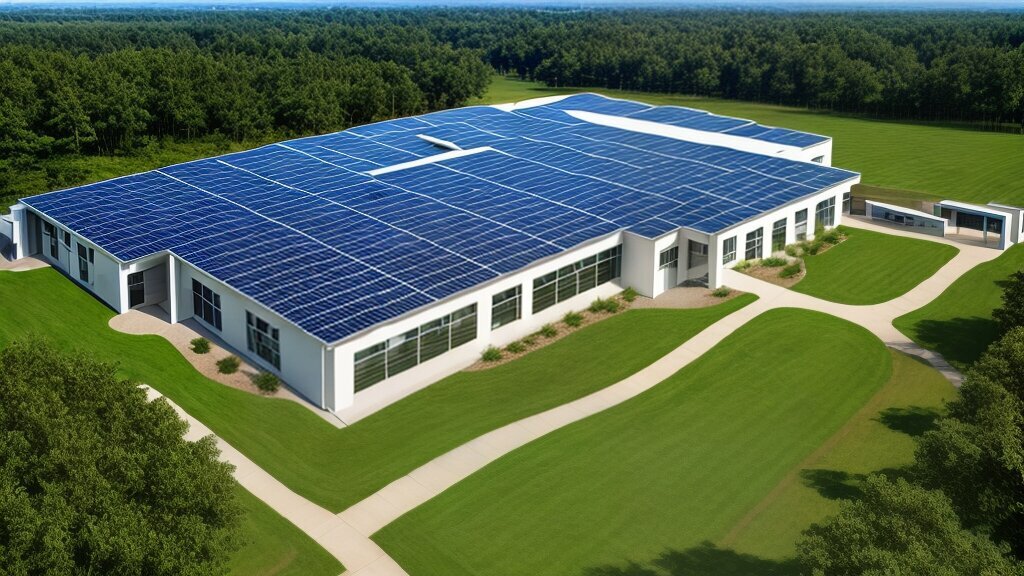
Image source: Swinerton Builders
Hawaii Community College
Hawaii Community College installed a 250 kW solar power system with battery storage, allowing the campus to operate off-grid during emergencies and reducing their carbon footprint. The system has saved the college over $1 million in electricity costs since its installation, showcasing the long-term cost savings of renewable energy solutions.
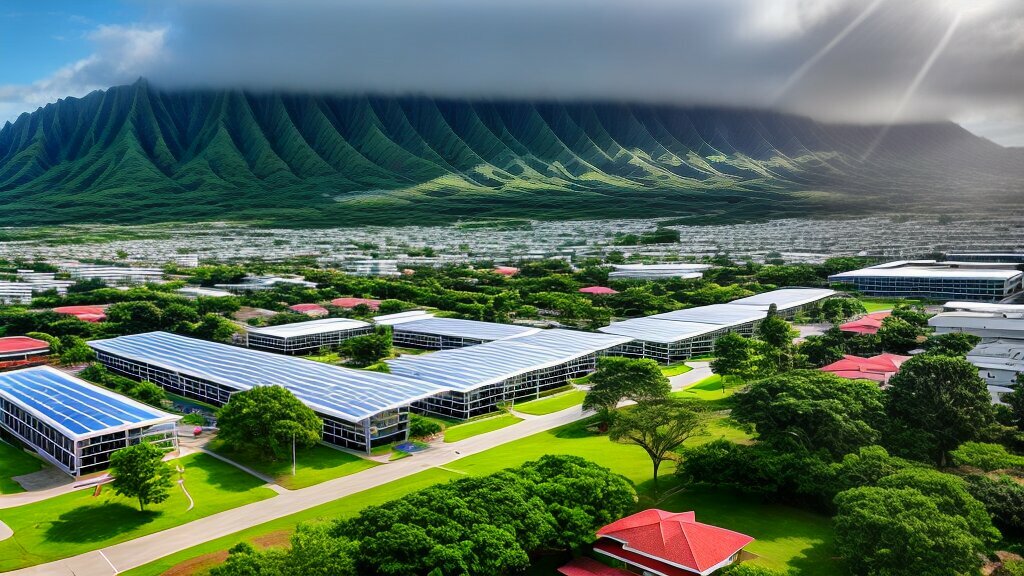
Image source: Hawaii Community College
These successful implementations highlight the potential for renewable energy microgrids to provide sustainable and cost-effective power solutions for construction sites.
Future Trends in Renewable Energy for Construction Sites
The future looks bright for renewable energy in construction sites. As the industry continues to shift towards sustainable practices, construction companies are increasingly adopting renewable energy solutions to reduce their carbon footprint and achieve cost savings.
One exciting trend is the development of advanced energy storage technologies that allow for more efficient and reliable energy management. This includes the use of battery storage systems that can store and release energy as needed, as well as innovative solutions like hydrogen fuel cells that convert renewable energy into electricity without producing harmful emissions.
Another trend is the integration of smart grid technology, which enables construction sites to better manage their energy consumption and improve their overall efficiency. By using real-time data to optimise energy use and track performance, construction sites can reduce their energy costs and minimise their impact on the environment.
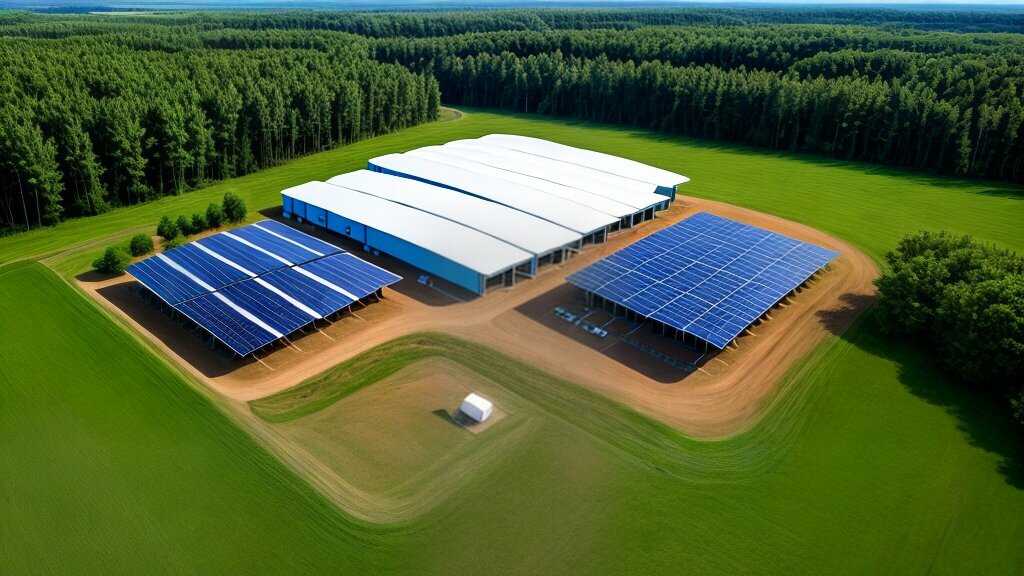
Finally, renewable energy financing is becoming more accessible, making it easier for construction companies to invest in sustainable energy solutions. This includes options like power purchase agreements (PPAs) and energy savings performance contracts (ESPCs), which allow construction companies to pay for renewable energy systems over time rather than upfront.
Examples of Emerging Technologies
Some emerging technologies that are currently being researched and developed for the construction industry include:
| Technology |
Description |
| Solar thermal collectors |
Collect solar energy to heat water for construction site use |
| Vertical-axis wind turbines |
Compact wind turbines that generate energy even in low-wind conditions |
| Hybrid energy systems |
Combine multiple renewable energy sources for optimal power generation |
As research and development in these areas continues, we can expect to see even more advanced and efficient renewable energy solutions for construction sites in the future.
Sustainable Power Solutions for Construction Sites
As the construction industry continues to grow, so does the demand for sustainable power solutions. Renewable energy microgrids are an excellent option for construction sites, providing a reliable source of power while significantly reducing carbon emissions. Implementing these systems, however, can pose unique challenges and require careful planning.
Temporary Construction Sites
Temporary construction sites, in particular, require flexible and portable power solutions. Renewable energy microgrids can be designed to meet the specific needs of these sites, with options for mobile or portable systems. These solutions can be easily installed and removed, reducing the need for temporary generators or grid connections.
Key Considerations for Implementation
Implementing renewable energy microgrids in construction sites requires careful consideration of a range of factors, including system design, capacity planning, and maintenance requirements. It is essential to work with experienced experts to ensure the system is appropriately designed and installed, taking into account the specific needs and requirements of the construction site.
Future Trends
The future of renewable energy microgrids looks bright, with exciting advancements in energy storage, smart grid integration, and renewable energy financing. As technology continues to improve, the cost of implementing these systems is likely to decrease, making them a more accessible option for construction companies of all sizes.
Overall, the adoption of renewable energy microgrids for construction sites is a crucial step towards promoting sustainability and reducing carbon emissions. By working together to implement these systems, we can ensure a healthier, more sustainable future for all.
FAQ
Q: What are renewable energy microgrids?
A: Renewable energy microgrids are self-contained power systems that utilize sustainable energy sources, such as solar or wind, to generate electricity for construction sites. These microgrids can operate independently or in conjunction with the main power grid, providing reliable and clean energy solutions.
Q: How do renewable energy microgrids function?
A: Renewable energy microgrids combine renewable energy generation sources, energy storage systems, and advanced energy management technologies. The renewable energy sources, such as solar panels or wind turbines, generate electricity that is stored in batteries or other storage devices. The stored energy can then be used to power the construction site’s equipment and facilities.
Q: What are the benefits of using renewable energy microgrids in construction sites?
A: The use of renewable energy microgrids in construction sites offers several advantages. It reduces CO2 emissions and environmental impact by replacing fossil fuel-based power sources. It also provides a reliable and sustainable power solution, independent of the main power grid, reducing the risk of power outages and increasing operational efficiency.
Q: How do off-grid power systems benefit construction sites?
A: Off-grid power systems allow construction sites to operate independently from the main power grid. This independence provides flexibility in power management and reduces dependence on external electricity sources. It enables efficient energy consumption and can lead to cost savings due to reduced reliance on grid electricity.
Q: What are the benefits of integrating renewable energy in construction sites?
A: Integrating renewable energy solutions into construction sites offers several benefits. It reduces energy costs by utilizing sustainable energy sources, eliminates or reduces reliance on fossil fuels, and improves the environmental performance of construction projects. Additionally, it enhances the overall sustainability and reputation of the construction industry.
Q: How can renewable energy be implemented in temporary construction sites?
A: Implementing renewable energy microgrids in temporary construction sites requires a flexible and mobile approach. Portable solar panels, wind turbines, or battery storage systems can be utilized to provide temporary power solutions. These systems can easily be transported and set up at different construction sites, offering sustainable power solutions.
Q: What should be considered when implementing renewable energy microgrids in construction sites?
A: Key considerations for implementing renewable energy microgrids in construction sites include system design, capacity planning, and maintenance requirements. The size and location of the construction site, energy demand, and available renewable energy resources should be taken into account. Proper maintenance and monitoring of the microgrid system are essential for optimal performance and longevity.
Q: Are there any successful case studies of renewable energy microgrid implementation in construction projects?
A: Yes, several construction projects have successfully implemented renewable energy microgrids. These projects have showcased the positive impact of sustainable power solutions on overall project efficiency and environmental sustainability. Real-life examples demonstrate the feasibility and benefits of incorporating renewable energy microgrids into construction sites.
Q: What are the future trends in renewable energy for construction sites?
A: Future trends in renewable energy for construction sites include advancements in energy storage technology, smart grid integration, and innovative financing models. As renewable energy technology continues to evolve, construction sites can expect more efficient and effective ways to generate, store, and manage sustainable power.






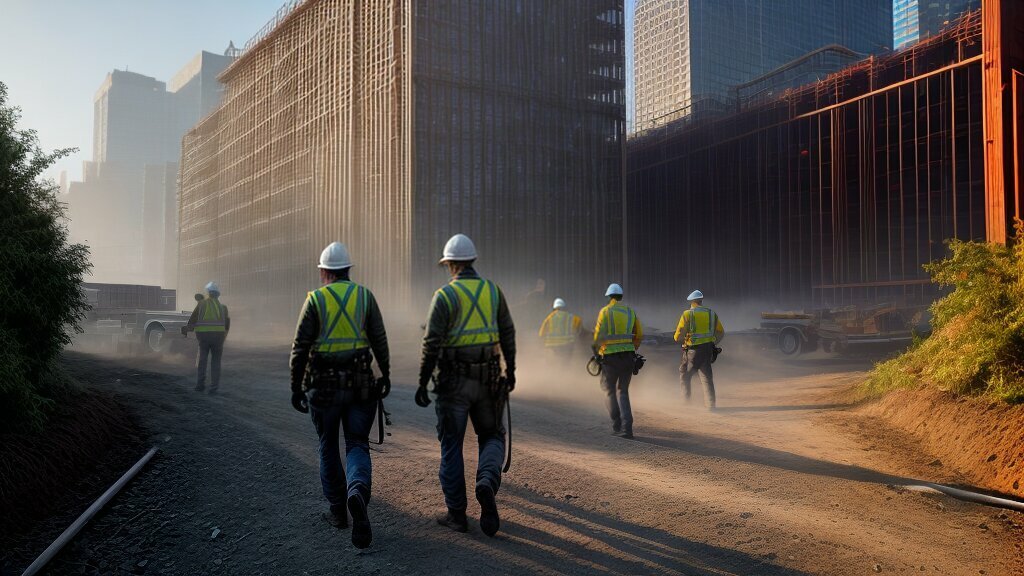



















Post comments (0)